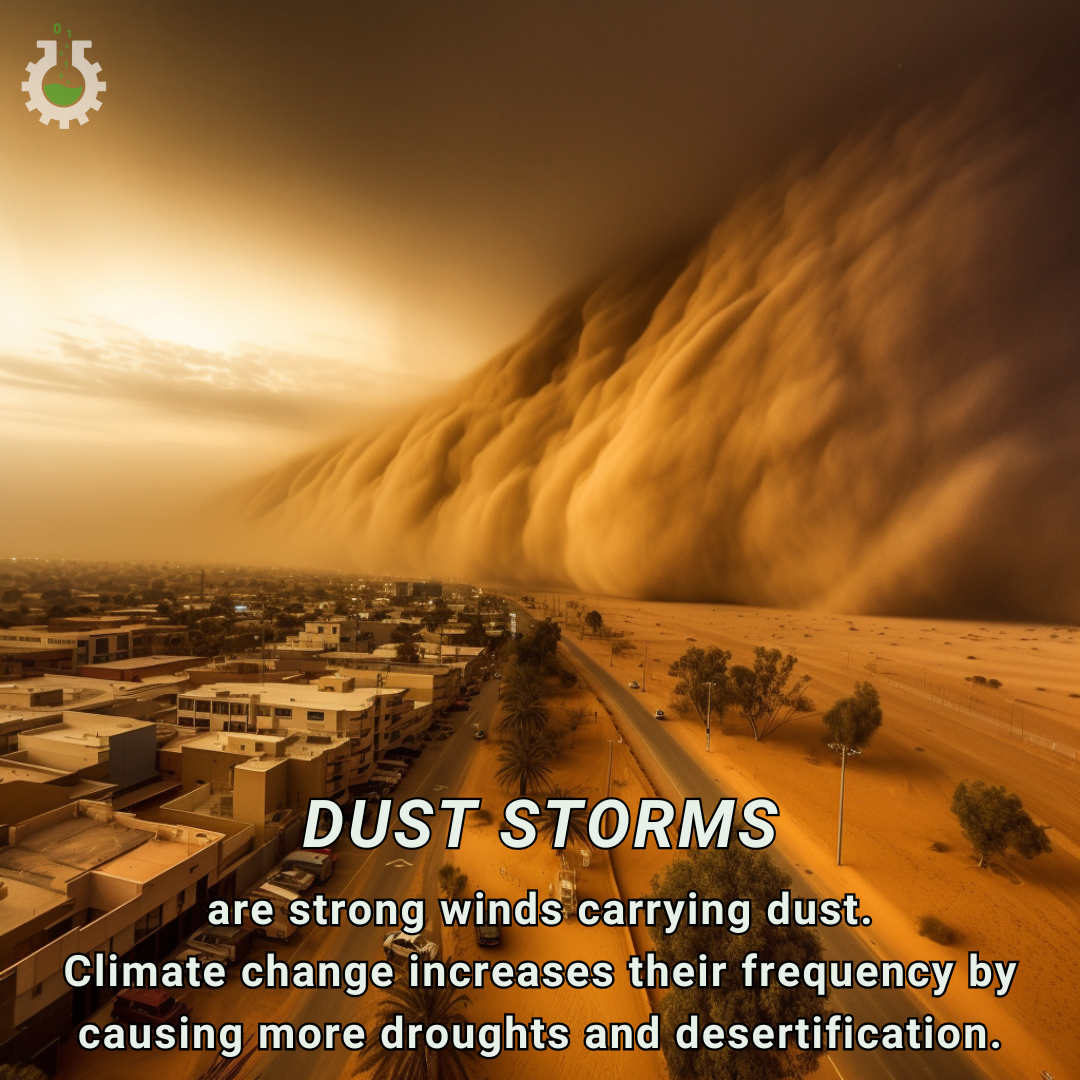July 24, 2024
Climate Change Poster Collection of the Day – Dust Storms
Book a Demo
Today’s Climate Change Poster Collection highlights Dust Storms, also known as sandstorms, are meteorological phenomena characterized by strong winds lifting large amounts of dust and sand particles into the atmosphere, reducing visibility and often causing significant environmental and health impacts. These storms are common in arid and semi-arid regions, where loose soil and sparse vegetation provide ample material for the wind to pick up. However, the frequency and intensity of dust storms are increasingly being influenced by climate change, exacerbating their effects and posing new challenges for affected regions.
Climate change, driven by the increase in greenhouse gas emissions, is altering weather patterns and intensifying extreme weather events worldwide. One of the critical ways it influences dust storms is through changes in precipitation and temperature patterns. As global temperatures rise, many regions are experiencing prolonged droughts and higher evaporation rates, leading to drier soils and reduced vegetation cover. This creates ideal conditions for dust storms, as the loose, dry soil is more easily lifted by the wind. Additionally, the increase in temperature can enhance the strength and frequency of wind patterns, further contributing to the prevalence of dust storms.
Moreover, climate change can shift the timing and distribution of rainfall, leading to more erratic and intense precipitation events. While heavy rains can temporarily suppress dust storms by wetting the soil, they can also lead to soil erosion and the loss of vegetation cover when followed by long dry spells. This cyclical pattern of intense rain followed by prolonged drought creates a feedback loop, making the soil more susceptible to being lifted by winds during dry periods. In some regions, the desertification process is accelerated by climate change, turning once fertile lands into arid deserts, further amplifying the conditions conducive to dust storms.
The impacts of increased dust storm activity are far-reaching. For human health, inhaling fine dust particles can lead to respiratory issues, cardiovascular problems, and other health complications. Dust storms can also disrupt transportation, damage infrastructure, and reduce agricultural productivity by burying crops and depleting soil nutrients. Ecologically, dust storms can affect air quality and climate by altering the Earth’s radiative balance, influencing cloud formation, and depositing nutrients in distant ecosystems, sometimes benefiting them but often causing harm.
Addressing the growing threat of dust storms in the context of climate change requires a multifaceted approach. Mitigation efforts should focus on reducing greenhouse gas emissions to slow the pace of climate change, while adaptation strategies should aim to improve land management practices, enhance soil conservation, and restore vegetation cover to stabilize the soil. By understanding the intricate connections between climate change and dust storms, we can develop more effective solutions to protect both human health and the environment from the increasing frequency and intensity of these formidable natural events.
Discover an inspiring collection of climate change poster.



